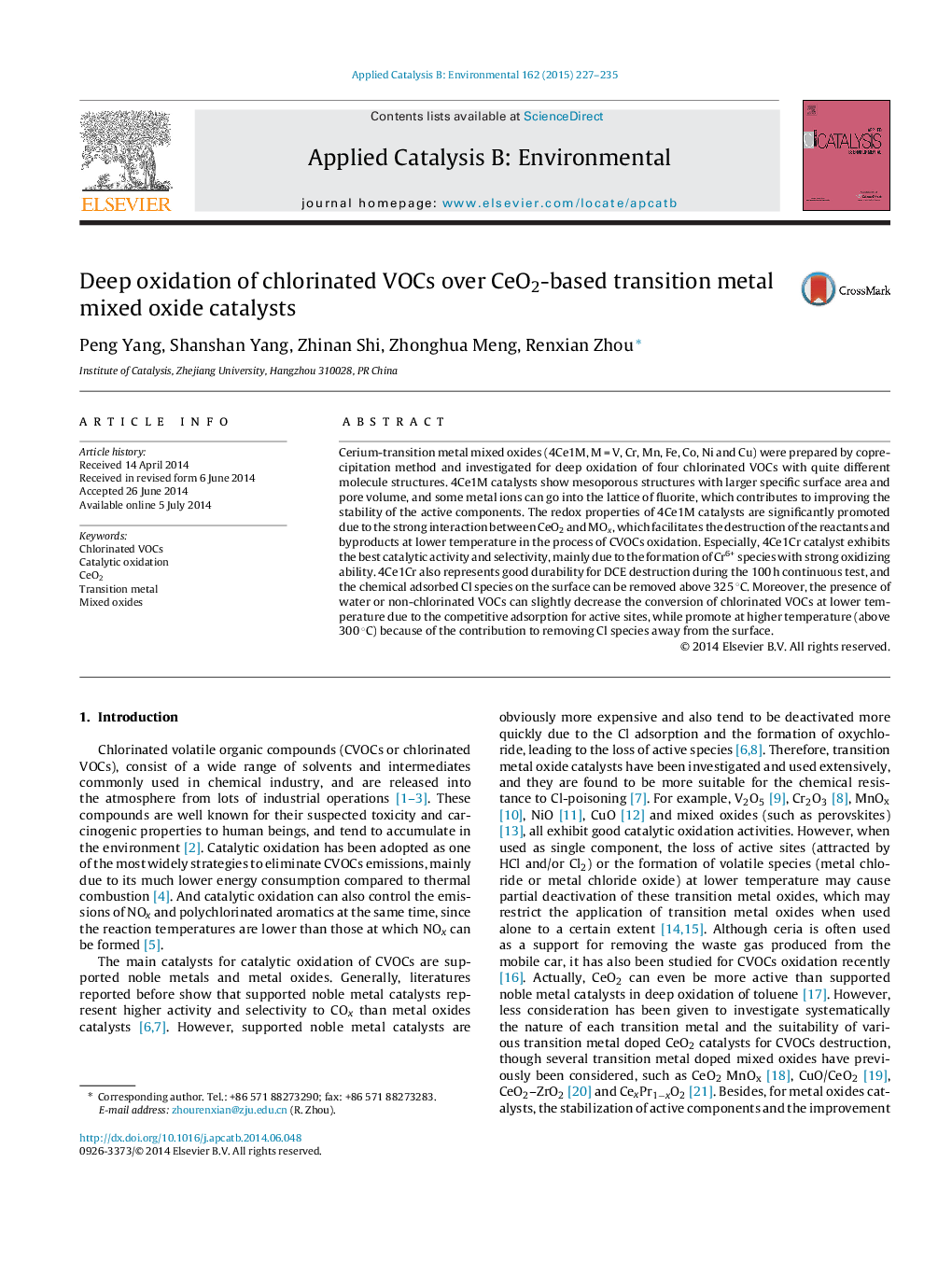| Article ID | Journal | Published Year | Pages | File Type |
|---|---|---|---|---|
| 45641 | Applied Catalysis B: Environmental | 2015 | 9 Pages |
•CeO2–MOx show porous structures with large surface area and pore volume.•CeO2–MOx mixed oxides are systematically investigated for deep oxidation of CVOCs.•4Ce1Cr shows the best catalytic performances due to the formation of Cr6+ species.•Chemical adsorped Cl species can be removed from the surface of 4Ce1Cr above 325 °C.•Presence of H2O, C6H6 and EA slightly decrease CVOCs conversion at low temperature.
Cerium-transition metal mixed oxides (4Ce1M, M = V, Cr, Mn, Fe, Co, Ni and Cu) were prepared by coprecipitation method and investigated for deep oxidation of four chlorinated VOCs with quite different molecule structures. 4Ce1M catalysts show mesoporous structures with larger specific surface area and pore volume, and some metal ions can go into the lattice of fluorite, which contributes to improving the stability of the active components. The redox properties of 4Ce1M catalysts are significantly promoted due to the strong interaction between CeO2 and MOx, which facilitates the destruction of the reactants and byproducts at lower temperature in the process of CVOCs oxidation. Especially, 4Ce1Cr catalyst exhibits the best catalytic activity and selectivity, mainly due to the formation of Cr6+ species with strong oxidizing ability. 4Ce1Cr also represents good durability for DCE destruction during the 100 h continuous test, and the chemical adsorbed Cl species on the surface can be removed above 325 °C. Moreover, the presence of water or non-chlorinated VOCs can slightly decrease the conversion of chlorinated VOCs at lower temperature due to the competitive adsorption for active sites, while promote at higher temperature (above 300 °C) because of the contribution to removing Cl species away from the surface.
Graphical abstractFigure optionsDownload full-size imageDownload as PowerPoint slide
